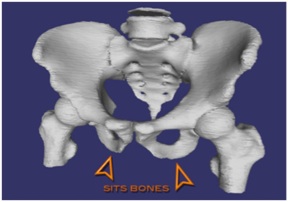 |
 |
 |
 |
 |
 |
 |
 |

|
 |
|
| |
|
Points of Contact, pt. 2 “Pain while cycling in the buttocks, hands and feet is almost always a result of pressure. Thus, reducing these pains means reducing pressure.” by Coach John Hughes John Hughes is the author of Anti-Aging: 12 Ways to You Can Slow the Aging Process and of the book Distance Cycling. He has written 40 articles on training, nutrition, psychology and medical issues for RoadBikeRider.com. More about Coach Hughes. Points of contact for endurance cyclists [ Part 1 | Part 2 Pain in the buttocks, hands and feet is almost always a result of pressure, which either reduces blood flow to the affected area and/or compresses the local nerves. Reduced blood flow or ischemia causes pain, just like ischemia in the arteries to the heart causes chest pain. Thus, reducing these pains means reducing improving blood flow and reducing pressureon nerves. Often we try to figure out a solution at the particular sore spot; however, larger, more general factors may contribute to the problem: General factors Bike fit: If the bike fits you correctly, then your weight is appropriately distributed between the saddle and the handlebars. I often see riders whose hips are rocking—the saddle is too high and chafing problems may result. Or I see a rider with one leg dropping on every stroke—probably a leg length discrepancy with resulting friction on that side. Or a cyclist shaking the rider’s hands—the bars may be too low or too far away. Fitness: Your weight should not contribute to excess pressure on the saddle. Your legs should be strong enough that you balance on the saddle rather than sitting on it. You should have sufficient core strength that your hands rest lightly on the bars like you are typing. Technique: Have you developed the habit of shifting your hand positions on the bars frequently? Do you stand every 10 minutes or so, even on flat terrain? Do you pedal with a round stroke rather than pedaling squares, which will reduce the pressure on your feet? Specific causes Butt: In one study of amateur long-distance cyclists, over 70% of the seat-related discomfort was due to pain around the ischial tuberosities (sitz bones). These are very similar to bed sores in bed-ridden patients, caused by decreased blood flow.
Hands: Hand pain and numbness is the result of compression of the nerves, which can be caused by riding with your wrists cocked, a bike fit that puts too much weight on your hands or a bike design that transmits considerable road shock.
Feet: When you ride your feet swell compressing the nerves between the metatarsal heads (bones under the balls of your feet), which results in numb toes and hot feet. To reduce the pressure:
Points of Contact[ Part 1 | Part 2 More information
|
|
